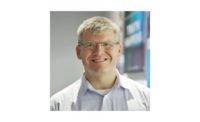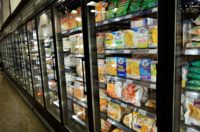Teralytics, New York, Telefónica NEXT, Germany, and sustainability solution provider South Pole Group, San Francisco, conducted a study in Nuremberg, Germany, that reveals the analysis of mobile network data as an effective way to estimate CO2 and NOX emissions in urban areas. To achieve this, Teralytics examined aggregated and anonymized data, which is generated when mobile devices communicate with Telefónica’s mobile communication cells while users make calls, send texts or browse the internet. Teralytics refined this raw data into human mobility patterns to understand how the different modes of transport, for instance trains or cars, are frequented. Combining this information with data on the emissions of the different transport modes, the three entities estimated air pollution and greenhouse gas (GHG) emissions in the city.
As each form of transportation produces a unique amount of CO2 and NOX emissions, understanding urban mobility patterns is vital to understand the source of emissions. The study used this information to estimate with up to 77% accuracy the concentration of air pollutants in the city. These findings encourage further exploration of how Big Data can be used to understand and ultimately solve environmental issues such as air pollution worldwide.
“While our contemporary urban lifestyles result in the generation of harmful greenhouse gasses, it also generates large amounts of behavioral data. Our mission at Teralytics is to use this data for the benefit of society,” says Georg Polzer, chief executive officer of Teralytics. “Our findings from Nuremberg showed that this data can be used to give city planners insights into how human mobility contributes to pollution. This is a vital part to efficiently design and implement clean air and low carbon strategies. We are looking forward to further exploring this opportunity.”
Using a 3-level process, the fully anonymized and aggregated data was first transformed into movement flows by the data scientists at Teralytics, identifying over 1.2 million transportation routes during the analyzed time period. South Pole Group then used an atmospheric model to estimate air pollution levels caused by the usage of the different modes of transportation, taking into account meteorological data and information on the respective traffic carriers’ emission levels from the German Federal Ministry for the Environment (BMUB). In the third step, the accuracy of the method was examined by comparing the findings with existing data from air pollution measuring stations. The values measured at these stations were found to correlate up to 77% with those from the Teralytics’ calculations.
The results of this pilot study constitute a sound basis to further develop the methodology. Following its success, the consortium secured financial support from Climate KIC’s Low Carbon City Lab (LoCaL), an initiative that brings together cities, business, academia and NGO’s to deliver high environmental and societal impact. With this backing, the research partnership will expand and improve the methodology, focusing on short travel routes and taking into account local emission factors like airports, large-scale events and types of vehicles on the road (i.e. electric cars and SUVs). Moreover, the influence of factors such as traffic jams and red lights will be taken into account to make even more accurate estimations of the air pollution levels in a city.
“The results from this pilot study exceed our expectations,” says Maximilian Groth, business developer at Teralytics. “We are confident that we will soon be able to scale this product to cities worldwide to support urban planners in making our air cleaner and achieving the goals of the Paris Agreement at the lowest possible cost.”
“Approximately 70% of global greenhouse gas emissions are generated in cities, meaning that they play a key role in climate protection. We see great potential in the use of continuously generated data, such as mobile network data, to measure and reduce pollution levels in cities," says Renat Heuberger, chief executive officer of South Pole Group.
“The pilot project in Nuremberg has clearly shown the specific added value of anonymized mobile network data for the environment,” adds Florian Marquart, managing director of Telefónica NEXT for Advanced Data Analytics. “This is data from people for people. We see great potential in the results, and will start the next phase of our research. The goal is to develop a product that German cities, German states and the German federal government can use to better face the challenges of emissions pollution.”



